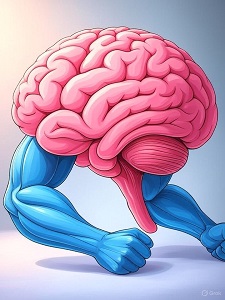
The Vital Role of Water and Salt in Human Health: Insights from Barbara O’Neill’s LectureIntroductionWater and salt are foundational to human health, as highlighted in Barbara O’Neill’s lecture titled Salt & Water. As the second and third most vital elements for life, respectively, water and sodium play critical roles in cellular function, hydration, and overall physiological balance. This paper synthesizes O’Neill’s insights, grounded in basic anatomy and physiology, to provide a clear, scientifically informed, and accessible explanation of why water and the right type of salt are essential for optimal health. It also addresses common misconceptions and offers practical recommendations for improving hydration and mineral balance.The Importance of WaterWater is the second most vital element for life, surpassed only by oxygen. Humans can survive only a few weeks without water, as O’Neill illustrates with the story of escapees from a Siberian work camp who endured nearly two weeks without it. Water is essential for every bodily function, including digestion, nutrient transport, joint lubrication, and brain health. The body loses approximately 2.5 quarts (2.4 liters) of water daily through urine (1.5 quarts), skin (0.5 quarts), colon (0.3 quarts), and lungs (0.2 quarts). To maintain hydration, O’Neill recommends drinking at least 2 quarts (8 cups) of water daily, with additional intake from fruits, vegetables, or herbal teas, especially for those engaging in activities like saunas that increase water loss.Dehydration, even mild, can impair numerous bodily functions. O’Neill cites Dr. Fereydoon Batmanghelidj’s book, Your Body’s Many Cries for Water, which argues that many health issues—headaches, digestive problems, joint pain, and even mental health conditions—stem from chronic dehydration. For example, dehydration can thin the stomach’s mucosal lining, reducing sodium bicarbonate levels and increasing the risk of ulcers. It can also shrink brain cells, leading to headaches and negative thought patterns, or reduce synovial fluid in joints, causing pain often misdiagnosed as arthritis. In the lungs, insufficient water affects alveoli function, impairing oxygen exchange and contributing to constricted breathing. O’Neill shares a case of a 44-year-old man whose chronic headaches, lower back pain, and congested chest improved significantly within a week of increasing water intake, demonstrating the profound impact of proper hydration.The Role of Sodium and the Right Type of SaltSodium, the third most vital element for life, is critical for maintaining fluid balance and facilitating nutrient transport across cell membranes. O’Neill explains that sodium is most abundant in seawater, which contains approximately 30% sodium and 50% chloride among its 92 minerals. However, refined table salt (sodium chloride) is problematic because it lacks the balancing minerals found in natural sea salt, making it harsh and potentially harmful. Excessive table salt consumption, combined with low potassium intake from fruits and vegetables, disrupts the sodium-potassium balance maintained by pumps in cell membranes. This imbalance can lead to osmosis, where excess sodium enters cells, causing them to swell and contributing to high blood pressure.O’Neill advocates for unrefined salts like Celtic salt, which contains 82 minerals, including three forms of magnesium (chloride, bromide, and sulfate). Magnesium, a “water-hungry” molecule, helps draw water into cells, enhancing hydration. Himalayan salt, with about 75 minerals, is a good alternative but less effective due to lower magnesium content. By placing a small crystal of Celtic salt on the tongue before drinking water, the magnesium facilitates water absorption into cells, preventing issues like frequent urination or swelling. O’Neill suggests starting with a sesame seed-sized crystal for those with high blood pressure, adjusting as needed.Sodium also plays a key role in nutrient transport. O’Neill references anatomy and physiology texts stating that sodium is the primary transport mechanism for glucose across the intestinal brush border into the bloodstream. Without adequate sodium, glucose absorption is impaired, which can disrupt energy metabolism. Unlike table salt, which can dull taste buds, Celtic salt enhances food flavor due to its mineral complexity, as O’Neill illustrates with a flavorful red lentil dish.Addressing Common Health IssuesO’Neill connects dehydration and mineral imbalances to several health conditions:
- High Blood Pressure: Excessive table salt and low potassium intake can increase intracellular sodium, causing cell swelling and elevating blood pressure. Celtic salt, with its balanced minerals, may help, as supported by French doctor Dr. Lelangry’s work.
- Digestive Issues: Dehydration thins the stomach’s mucosal lining, reducing its protective sodium bicarbonate and increasing ulcer risk. O’Neill recounts a case of a man with chronic stomach pain linked to Helicobacter pylori. By drinking water between meals (not during), his mucosal lining thickened, allowing hydrochloric acid to eliminate the bacteria naturally.
- Mental Health and Cognitive Decline: Dehydration can shrink brain cells, contributing to negative thought patterns and, in severe cases, conditions like dementia. O’Neill shares a story of a 70-year-old woman with dementia who regained lucidity within 24 hours of proper hydration and bowel movement support, highlighting water’s role in brain health.
- Diabetes and Insulin Resistance: Dehydration impairs pancreatic hormone production (insulin and glucagon), contributing to blood sugar imbalances. A high-carbohydrate, low-fat diet exacerbates insulin resistance, as cells resist glucose uptake, leading to elevated blood sugar and potential high blood pressure.
- Drink Adequate Water: Aim for at least 2 quarts (8 cups) daily, sipped gradually to avoid overwhelming the system. Spread intake throughout the day, avoiding large amounts at once.
- Use Celtic Salt: Place a small crystal of Celtic salt on the tongue before each glass of water to enhance cellular hydration. Start with a small amount if concerned about blood pressure.
- Time Water Intake Correctly: Avoid drinking water during meals to preserve hydrochloric acid’s antibacterial and digestive functions. Drink 30 minutes before or after meals.
- Increase Potassium-Rich Foods: Consume plenty of fruits and vegetables to maintain sodium-potassium balance and support cellular health.
- Monitor Hydration: Clear urine (except when taking B vitamins, which may cause yellowing) indicates adequate hydration.
- Batmanghelidj, F. (1992). Your Body’s Many Cries for Water. Global Health Solutions.
- Guyton, A. C., & Hall, J. E. (2015). Textbook of Medical Physiology. Elsevier.
- Marshall, B. J., & Warren, J. R. (1984). Unidentified curved bacilli in the stomach of patients with gastritis and peptic ulceration. The Lancet, 323(8390), 1311-1315.






